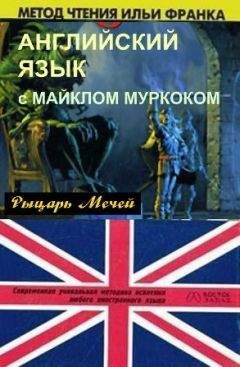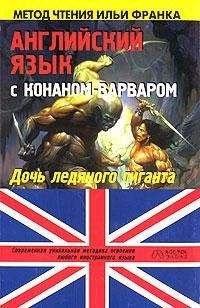Нина Пусенкова - Английский язык. Практический курс для решения бизнес-задач
–Taxation system – tax rates and incentives
–Wage legislation – minimum wage and overtime
–Work week
–Mandatory employee benefits
–Industrial safety regulations
–Product labeling requirements
Economic Analysis
–Type of economic system in countries of operation
–Government intervention in the free market
–Comparative advantages of host country
–Exchange rates and stability of host country currency
–Efficiency of financial markets
–Infrastructure quality
–Skill level of workforce
–Labor costs
–Business cycle stage (e.g. prosperity, recession, recovery)
–Economic growth rate
–Disposable income
–Unemployment rate
–Inflation rate
–Interest rates
Social Analysis
–Demographics
–Class structure
–Education
–Culture (gender roles, etc.)
–Entrepreneurial spirit
–Attitudes (health, environmental consciousness, etc.)
–Leisure interests
Technological Analysis
–Recent technological developments
–Technology’s impact on product offering
–Impact on cost structure
–Impact on value chain structure
–Rate of technological diffusion
The number of macro-environmental factors is virtually unlimited. In practice, the firm must prioritize and monitor those factors that influence the industry. Even so, it may be difficult to forecast future trends with an acceptable level of accuracy. In this regard, the firm may turn to scenario planning techniques to deal with high level of uncertainty in important macro-environmental variables.
Source: www.netmba.com
Essential Vocabulary
1. SWOT Analysis – анализ сильных и слабых сторон, возможностей и угроз
2. expertise n – специальные знания, компетентность, эрудиция; экспертиза
3. proprietor n – собственник, владелец
proprietary a – собственнический, составляющий собственность
4. know-how n – ноу-хау
5. high-grade a – высокого уровня, высокого качества
6. shift n – смена, часы работы; сдвиг, перемещение; средство
shift v – сдвигаться, перемещаться; менять, изменять; убирать
7. substitution n – замена, замещение, субституция
substitute v – заменять
substitute a – взаимозаменяемый, субститут
8. profile n – профиль, очертание; краткий очерк, краткое описание
9. value chain – цепочка ценности
10. logistics n – логистика, материально-техническое снабжение
11. warehouse n – склад
12. after-sale services – послепродажное обслуживание
13.specific a – специфический, удельный, особый, характерный; конкретный, определенный
14. support activities – вспомогательная деятельность
15. procurement n – закупки, приобретение, материально-техническое обеспечение; контракт на поставку
procure v – доставать, добывать, приобретать, закупать, снабжать
16. raw materials – сырье
17. Human Resource Management (HRM) – управление трудовыми ресурсами
18. recruitment n – набор кадров, комплектование личным составом
recruiter n – агент по набору кадров
recruit v – набирать кадры
19. overheads n – накладные расходы
20.discrete а– прерывистый, дискретный, разрозненный; оторванный, отвлеченный
21. make-or-buy decision – решение производить или покупать
22. differentiation n – дифференциация, дифференцирование, установление различий, разделение; специализация
differentiate v – дифференцировать, устанавливать различия
23. upstream n – в нефтяном и газовом бизнесе – геологоразведка и добыча, в более широком смысле – производство (товаров) или генерирование (электроэнергии)
24. downstream n – в нефтяном и газовом бизнесе – переработка и сбыт, в более широком смысле – дистрибуция и сбыт
25. PEST (Political, Economic, Social, Technological) analysis – анализ политических, экономических, социальных и технологических факторов
26. enforcement n – давление, принуждение; осуществление; наблюдение за проведением в жизнь, принудительное взыскание
enforcer n – лицо, претворяющее закон в жизнь; служитель правопорядка
enforce v – принуждать, взыскивать; приводить в исполнение, проводить в жизнь
enforceable a – осуществимый, поддающийся проведению в жизнь; обеспеченный правовой санкцией, имеющий исковую силу
27. intellectual property – интеллектуальная собственность
28. anti-trust law – антитрестовский закон
29. overtime n – сверхурочная работа
30. label n – ярлык, наклейка, этикетка, бирка, марка
labeling n – классификация, наклеивание этикетки или ярлыка, маркирование
label v – наклеивать этикетку или ярлык, маркировать
31. intervention n – интервенция, вмешательство
intervene v – вмешиваться
32. host country – принимающая страна
33. exchange rate – обменный (валютный) курс
34. business cycle – цикл деловой активности
35. prosperity n – процветание
prosper v – процветать
prosperous a – процветающий
36. recovery n – подъем экономической активности после рецессии; амортизация издержек, возмещение; взыскание; остаточная стоимость фиксированного актива после амортизации; повышение курса (валюты или ценных бумаг); оживление
recover v – оживляться; получать обратно; выздоравливать; наверстывать, возмещать; выправляться; излечивать; собирать; взыскивать; выигрывать (дело)
recoverable a – возместимый, поправимый, излечимый; извлекаемый (о запасах)
37. disposable income – располагаемый доход
38. environmental consciousness – экологическая сознательность
39. diffusion n – диффузия, проникновение, распространение, рассредоточение
diffuse v – распространяться, рассредоточиваться
Exercise 1. Answer the following questions.
1. Why is SWOT Analysis useful in the strategic planning process? 2. What can be considered a company’s strength? 3. What are its weaknesses and how do they interact with strengths? 4. What opportunities may the external environment analysis reveal? 5. What changes in the external environment may present threats to the firm? 6. How can a firm develop its competitive edge? 7. What are the activities that comprise the value chain? 8. What specific activities can five generic activities include? 9. What are the support activities and what is their role in value creation? 10. For what decisions is the value chain useful? 11. What is the role of the value system? 12. What is the essence of the PEST Analysis? 13. Why should PEST Analysis be performed for all countries of interest? 14. Is it possible to accurately forecast future trends?
Exercise 2. Explain the meaning of the word «profile» in the following contexts and make your own sentences with this word along the same lines.
1) Kakha Bendukidze, a high-profile business executive, went into politics.
2) Information from competitor analysis can be compiled into a response profile of possible moves that might be made by the competitor.
3) Because of the high level of risk generally associated with the emerging markets, investment recommendations of financial advisors are limited to clients with an appropriate aggressive investment profile.
4) Recently, Russian company share prices have been going mostly up, while their risk profile has been coming down.
Exercise 3. Make a SWOT Analysis of Gazprom, the best-known Russian company. You can get all necessary information at www.gazprom.ru.
Exercise 4. A foreign company wants to launch business in Russia. You are strategic advisor to its CEO, and he asks you to perform a PEST Analysis of the country and make a conclusion about threats and opportunities of doing business in Russia.
Exercise 5*. Fill in the blanks using terms given below.
Competitor Analysis
In formulating………., managers must consider the strategies of the firm’s competitors. While in highly………… commodity industries the moves of any single……… may be less important, in……… industries competitor analysis becomes a vital part of…………
Competitor analysis has two primary activities: 1) obtaining information about important competitors, and 2) using that information to…….. competitor behavior. The……… of competitor analysis is to understand:
–with which competitors to compete,
–competitors’ strategies and planned actions,
–how competitors might react to a firm’s actions,
–how to influence competitor’s behavior to the firm’s own advantage.
Casual knowledge about competitors usually is insufficient in competitor analysis. Rather, competitors should be analyzed systematically, using organized competitor……….-gathering to compile a wide…….. of information so that well informed………….. can be made.
Competitor Analysis Framework
Michael Porter presented a framework for analyzing competitors. This framework is based on the following four key aspects of a competitor:
–competitor’s objectives,
–competitor’s assumptions,
–competitor’s strategy,
–competitor’s capabilities.
Objectives and assumptions are what……… the competitor, and strategy and capabilities are what the competitor is doing or is capable of doing. Information from an analysis of the competitor’s objectives, assumptions, strategy, and capabilities can be compiled into a………… of possible moves that might be made by the competitor. This profile includes both potential……….. and………. moves. The specific moves and their expected strength can be………. using information gleaned from the analysis.
The result of the competitor analysis should be an improved ability to predict the competitor’s behavior and even to……….. it to the firm’s advantage.
Source: www.netmba.com
Terms:
leverage, player, intelligence, strategy decisions, range, predict, business strategy, response profile, fragmented, estimated, offensive, concentrated, strategic planning, goal, drive, defensive
Exercise 6. Translate into English.


